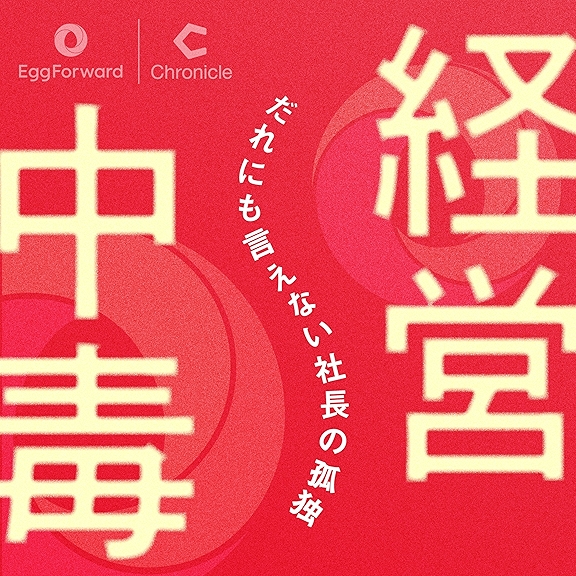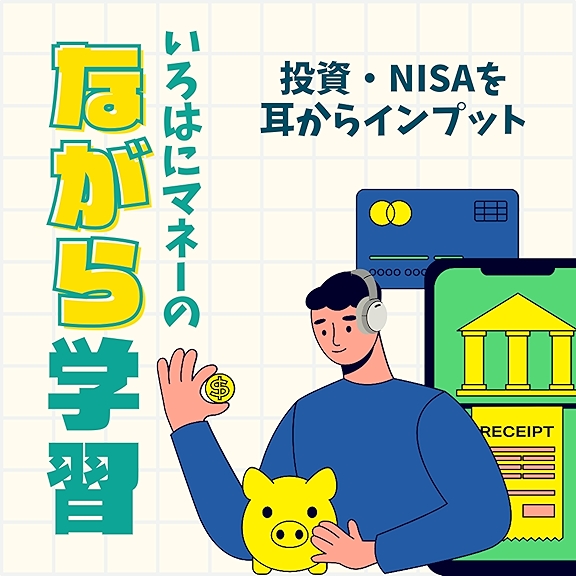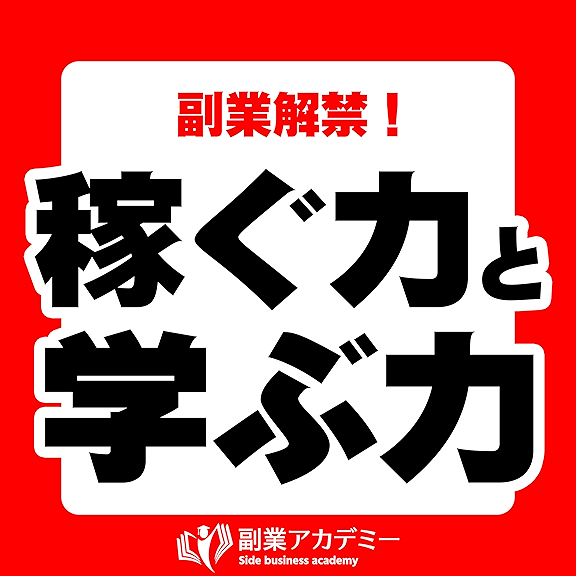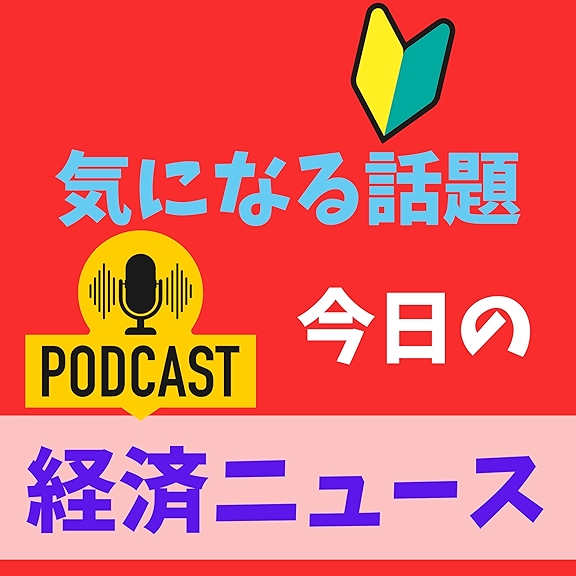
How to Increase Sales and Generate More Income Through Storytelling
How to Increase Sales and Generate More Income Through Storytelling Featuring Tom Jackobs
Start 2020 off right. Work on your sales process and give storytelling a try. It really helps you connect with your prospect. Storytelling will help put them at ease and increase trust immediately. It's really amazing the connection you can build. Step up your entrepreneur game in the new year. It will be working the extra effort to learn. We all have a story, why not use it to make more money and increase your success.
About Tom
Tom Jackobs - The Impact Pilot
To say Tom has been through a few things in his 30+ years of being an entrepreneur is an understatement. He’s definitely had more failures than successes, but wouldn’t have it any other way. He sold His fitness business which he owned for 9 years a year ago to become the Impact Pilot, helping entrepreneurs generate more income through better sales strategy and using stories to sell.
Tom has a BFA Degree in Theatre from DePaul University in Chicago and holds his private pilot license for single-engine airplanes, which was a lifelong dream he achieved in 2013.
He’s been a contributor to CBS Radio in Houston, a guest on Great Day Houston television show, Univision Television, Fox 26 News, KPRC Channel 2 and The CW Houston. He is also a presenter at the Small Business Development Center (SBDC) in Houston.
Special Gift for your audience: www.TomJackobs.com/storybook
or 3 Keys to Doubling Sales: www.TomJackobs.com/3Keys
Instagram - @impactpilot
Twiter @tomjackobs
Facebook - facebook.com/tom.jackobs
Facebook.com/jackobseffect
YouTube - youtube.com/c/tomjackobs
LinkedIn - www.linkedin.com/in/trainertom/
Full Transcript Below
How to Increase Sales and Generate More Income Through Storytelling Featuring Tom Jackobs
Wed, 8/4 7:05PM • 51:55
SUMMARY KEYWORDS
people, story, sales, presentation, business, salesperson, prospect, tom, sell, question, struggles, listen, years, buy, audience, talk, empathize, day, absolutely, entrepreneurial journey, how to increase sales, Generate more income, storytelling
SPEAKERS
Tom, Roy Barker
Roy Barker 00:04
Hello, and welcome to another episode of The Business of Business Podcast. I'm your host Roy. Of course, we are the podcast that brings you a wide variety of guests, I can talk to a diverse set of topics and today is no different. We're excited to have Tom Jackobs with us today he is the Impact Pilot. To say Tom has been through a few things in his 30 years of being an entrepreneur is an understatement.
He has definitely had more failures and successes, but wouldn't have it any other way. He sold his fitness business, which he owned for nine years to become the Impact Pilot helping entrepreneurs generate more income, through better sales strategy and using stories to sell. Tom, thanks for taking time out of your day to be with us today.
Tom 00:49
Roy, good to be here. Thanks for having me.
Roy Barker 00:52
Yeah, yeah. First off, before we get to too far got I got a lot of questions, a lot of thoughts running through my mind. But tell us a little bit about your journey, you know, kind of how you got here. In through, you know, how did you discover storytelling and what kind of an impact that it can have on our sales? sales process?
Tom 01:16
Yeah no, that's great question. Good, good lead in as well. You Know, I started
Roy Barker 01:23
I'm gonna let you tell us a good story that, in fact, oh, yeah.
Tom 01:29
couple good stories. Like, I started my entrepreneurial journey when I was 16 years old. And not not the typical lemonade stand that that most kids and that in dealing drugs. But I was actually a mobile DJ. And I also had a string quartet. So I played violin. And so a couple other my orchestra buddies from high school, would rent ourselves out for weddings and things like that, and Christmas parties and stuff in play, and then I would DJ homecomings, Bar Mitzvahs, and, and weddings as well.
And remember, this is just in my head, just how important sales became at that point, but kind of lost that feeling I get sort of the skill set after a while. But I would go through the Sunday paper when there was a paper and look at all the engagement announcements. Okay, I'd write down all of the brides to be a little ladies that got engaged. And then I would look them up in the white pages.
Roy Barker 02:50
Yeah, you're dating yourself.
Tom 02:54
Get there. This is when phone number address was all public information. And, and then I'd send them a letter with a call to action and a demo tape. And that was I didn't realize I was doing direct response marketing and sales. And this one, this one time this lady calls up and she wants to do a consultation. And so I go when I do that kind of what kind of music do you want? Because go through the whole intake process. And she was like, Oh, well, What school do you go to?
And I was like, Oh, I go to Northmont. And she's I haven't heard that college. Like, no, it's it's high school. It's just like, it was after she gave me the check the deposit. It she's like, you're at high school is Yeah, my high school. And actually, my mom's waiting in the car to take me home. So can we wrap this up? Yeah. So that and at that point, and in telling that story. Now, it's it's relating to what you kind of everybody's journey. At some point, you start somewhere, right. And, you know, fast forward 20 years from that moment, I started my fitness business.
And I was in corporate work for 10 years. I always had a side hustle. So I always had that entrepreneurial kind of bug. But finally, you know, the fitness center was my one entrepreneurial journey are that up until that point where I had no safety net. So no day job or in like that, so burned the bridges and went all in. And I thought, you know, in corporate America, I was a mid level manager, you know, making good money, managing millions of dollars of freight. And I thought, like, if I could do that I could certainly run a small business and within six months, I was broke.
Roy Barker 04:59
Oh wow
Tom 05:02
you know, financially, broke, mentally physically, it's just really took a toll on on my life and I bought an existing facility dumped out my entire 401k after 10 years of working in oil and gas, so you can imagine what that might have looked like. And in all the Apple stock I had 19 are in 2006, which, again, shoot me. And it was what six months in and I was looking at my shoes, I remember it was a Sunday, Sunday afternoon, and I was I was looking at my computer screens, and I was looking at my my bank account, and just tears started streaming down my my face and and you hear it, it was I was 40 years old at the time and and I was like, What the heck am I doing?
And I was looking at my bank account, and rent and payroll. This was Sunday rent and payroll were due on Friday. And anybody that's been in business, you know that, you know, employees like to get paid for and landlords love to get paid. As like, am I gonna have to shut down my business. And I had to make the hardest phone call of my life. I had to call dad for money at 40 years old. No. And I don't know if anybody's done that before.
But it is an extremely humbling experience. And I'm on the I'm on the phone with dad and you know, love my parents. They're awesome and very supportive. They've never worked for themselves. I mean, my mom's done some consulting work, but never like had a business. And so he's trying to help me like, well, so I'm Have you tried Facebook ads? Now I'm just kidding. But is you just kind of trying to help out like Dad, look, I know what I need. It's $10,000.
And I need it by Friday. Can you wire that? Or like, how's that work? Yeah. And he's like, Well, look, I'll go ahead and loan you the money. And the emphasis there was on loan, right? Because it came with a 12% interest rate. And I had to mortgage my house with him with my father. I like wait a second. I thought you were very entrepreneurial. This is not bad at 12% interest. That's good. That's good. I'll give you six month interest free.
The first six months. And at that moment, I was like, This is definitely the low point of my, my entrepreneurial journey. And, and I was like, okay, so I obviously paid rent, I paid my employees. But it also took some of that money. And I invested in learning. Because at that moment, I realized I didn't know everything that needed to be done in business. I didn't I didn't know sales. Sales was one thing that just like completely went away from me. And I invested in a sales program. And it completely transformed my business.
And I was able to pay my dad off in three months. Wow, that's really true. Yeah, completely turned around, you know, the first year of business. You know, even with the first six months of being a complete disaster, I squeezed out about $100,000 in gross revenue. In the second year, I did just shy of 500,000. And it was all because I learned how to sell, but more importantly, how to sell with story. And it's not just my own story, but stories of clients and things like that. And that's why, like I got really passionate about, about, you know, selling from store, selling with story, doing presentations on stage to build a business.
It just became kind of that that thing that I did and over the years, it's just grown and grown and grown. So now I I teach people how to sell from stage how to create those presentations, how to bring in their own personal story. So one it's kind of info-taining. And, and it's not just like a chronological story that bores people's to tears, but rather moves them to tears, oftentimes, so and then relate that personal story back to whatever they're selling so that they ultimately sell. Yeah.
Roy Barker 09:42
Yeah, cuz a couple things. It sounds like that, you know, I've got limited knowledge. So I'll place these more as questions and statements, but, you know, I think we need to be relatable people tend to buy from people that they like or people that they maybe see themself in a little bit. So if we can take these personal stories, I think that probably goes a lot further than me saying, well, I used to know, Joe, you know, live down the street from me. And here's Joe's story. Sometimes I'm sure that's helpful and appropriate. But when we get the chance to tie our story into it, it probably exponential.
Tom 10:19
Yeah, yeah, absolutely. And a lot of lot of people that work with there, and I was this way, as well, as, you know, why would I tell my story, it's not about me, it's about my client. So yeah, it is about your client, your client needs to relate to you. And we need to find that story. And it doesn't have to be a tragedy, you don't have to be in a car accident in your life to death experience or anything like that. But everybody has a journey, and, and struggles along the way.
And, and also, it doesn't mean we even need to be struggles, it could be like one of the most joyous occasions of your of your life, you know, I've couple stories about moments in my life that were just super, super amazing. And sometimes I dropped those stories in as well as a way of inspiring others.
Roy Barker 11:09
Yeah, because there, there used to be an old theory to that people bought on emotion and justify that with logic. And so absolutely, I guess, you know, again, as a question, part of what we want to do is try to get that emotional hook in, absolutely, to not be relatable, but also to start building a little bit of rapport.
Tom 11:34
Absolutely, that's it. And that's not just a theory, that's the reality. Some people do buy on emotion, and then back it up with with logic,
Roy Barker 11:44
right. So what are some good elements? I mean, I'm a, I'm a non writer, writer. I mean, I love to write, I wish I was better at it. So, you know, what are some good components of, of the storytelling, you know, whether we're writing whether we're up on stage, or, you know, sitting down across the desk from somebody in a sales presentation?
Tom 12:07
Yeah. Great, great question. So I use the Hero's Journey Framework. Okay. So it's kind of public domain theory. And every good put the emphasis on good I like a good movie is is it goes back to the hero's journey. And I break it down into just a pretty simple framework. The first thing that you need to do is started off with what I call an impact statement. So it's just a one or two sentence, intro that hooks the audience. So he's kind of started off with a bang. When I tell the the fitness center story, I always start with, you're sitting at my desk on a Sunday afternoon, looking at my computer, and tears started streaming down my face.
Automatically with that. It's a hook because people are like, That's odd. what's what's going on. And then, and then you can back go back in time, and what led up to that moment, and then how you resolve that moment. And then within that, you have people that help you, and then or people things or thoughts that help you, and then people things or thoughts that hurt you. And create that, and that push and pull that we often go through. And that's really that's the that's the structure. And, you know, we go through that. And whether you're writing or speaking, the story structure is still the same.
Roy Barker 13:46
Yeah, and I think the other thing it, it humanizes us because if I'm, if I'm in the audience, and, you know, we, I think we all do, we, we never want to admit that we're, we're struggling or that we failed. You know, we keep that to keep that to a minimum to our, you know, close, close family. I guess this, you know, this kind of opens that up to say, Oh, you know, I empathize with you. I know exactly how you feel because I've been there and and vice versa. You're telling the audience that I can empathize with you. I know exactly. You know, how you may be feeling?
Tom 14:24
Yep, you know, exactly. And it and again, people buy from those that they know, like and trust, right, if they can relate to you. Yeah. And this is what gets me you know, current day, kind of the Instagram influencers. And just people give out their sizzle reel all day long, you know, seven days a week, and nobody see sees kind of that the other real of life and what they've gone through to achieve what they have, even if they even have achieved anything.
Some of the some of the. But it's it's, you know, the old saying it takes 10 years to be an overnight success, right? We don't see the struggles a lot of time. And I think it does a disservice to people just starting out in business or in life and wanting to achieve something, if they don't understand what the struggle is and how to avoid it.
Roy Barker 15:23
right. Yeah. And kind of take a sidebar there for a minute about, you know, the internet, social media, it's awesome. And there's so much good to it. I don't be negative Nelly. But I think as a beginning entrepreneur, as somebody that may be struggling, you know, we look on there, and somebody just got the new car, the, you know, they're standing from this yacht, and like you said, We don't even know, if they were even within 10 miles of that yacht. It could have been photoshopped and dropped right in there. You know, we don't, we don't talk about or we don't understand. On the flip side of that, it's like, you know, who's Tom, he's all over the place.
Now. I mean, this guy just came on overnight. But he realizes that Tom has been working hard, you know, for 10 years or more, building this and the other good, I think it's a meme of like an iceberg. You know, where 90% of it is below the surface, all we see is a small, you know, 10% at the top. So I think we have to always have to be careful of comparing ourselves and judging ourselves. And it's, it's hard. But I think the, you know, kind of a new mantra is like, stay in your own lane, run your own race, you'll be much better off by not getting hung up and all of that.
Tom 16:44
Absolutely.
Roy Barker 16:47
So when we're doing a presentation in front of an audience, it could be sales. I mean, sometimes we have a tablet or a computer we get to use as a prop. But more thinking about when we're on that stage. You know, so many people get so nervous, like, oh, even if it's their story, it's still nerve racking to talk to other people about that. So what are some tips to, you know, number one, make sure we got this thing put together correctly. But number two, just take a deep breath, relax and just tell our story.
Tom 17:24
Yeah. I've seen some train wrecks. And I've been a train wreck. But yeah, yeah, the first step is in this may seem counterintuitive, but I actually have my clients write out their entire story longhand, or on the computer, but but written word for word. Yeah. So then we can really wordsmith it, to make sure that we're using the like words that are going to have an impact with the audience and with them. And so we go through the whole whole process, and then find the details. Because that's where you create the imagery in people's mind. You know, I could say, you know, I was driving my car, to the gym. And I don't know what type of cars popped into your head.
Roy Barker 18:20
I guess mine Nissan.
Tom 18:22
Yeah, and everybody's gonna have a different car in their head. Right? But if you want to bring them into your story, then you need to tell them what car you're driving. So that it's like the little things in the detail. Right? So you know, I was, and I had one client that said, You know, I was sitting in my gray, seen better days 1985 BMW in the parking lot. And then goes on with their story. And now you're there in the parking lot and a gray beat up BMW. Yeah.
So. So we go through and just kind of longhand, write that out and practice it word for word, and just go through it multiple times. Because that's, that's where you get the confidence is just doing the rehearsal and going through over and over and over again. And then once once you're up on stage, and that's, that's where I have this thing called the three P prop process. So presentation to performance for more profits. So then the performance part is where do you stand on stage when you're in front of people? How do you just move intentionally? Because a lot of speakers it's like, you know, a tennis match, right? They're just pacing back and forth. And there's and there's no reason for them to move on stage. It's really annoying.
And that actually takes away from from the story itself, or they're stuck behind a podium reading. And again, that's that's a big, no, no, to do. So. But that comes with practice. And that's, you know, There's nothing that that will get by with with just winging it. Right? You have to practice you have to have time to practice. And that's going to take the nerves away as well, you're going to be pretty confident. That's your story. So you better not forget it.
Roy Barker 20:15
Yeah, and I think that's a great point about the details. Because, you know, something a lot of us wouldn't even think about is like, Hey, I drove my car. But I think that really puts us in that car to where, you know, you can visualize, either you're in that situation, and like, yeah, I get that, or I've been there before. I remember that, you know, my old gray car. It really ties that together.
Tom 20:39
Yeah, yeah. And that's that, that's the whole point is to bring the audience into the story with you. There was a study done by a Princeton University professor, where they they did a fMRI, so functional MRI machine, that's where the magnetic stuff, and they did a brain scan. While on I think it was three people. One was the storyteller, and two are the receivers or the listeners of the story. And while they were telling the story, the same areas of the brain were lighting up in the receivers of the story. As with the teller of the story, interested, there becomes this neuro connection between the teller and the in the receiver of the story. It's so powerful.
Roy Barker 21:28
Yeah. So what about I hate to say props, but you know, we have PowerPoint, we have the, with the technology today, it's easier now I was telling somebody the other day, like, I was actually trying to explain to them what an overhead projector was with, you know, with those little clear things you put up there and wrote on. So I said, you know, we've come a long way, because there was so much wrong with those. But it's all we had. Anyway, you know, today, we've got so much, so much access to technology, but it can be a deterrent in some if we don't use it correctly, or we use too much too little.
And there's also other things and I know this is long, probably the longest question ever. But the other thing is using visuals now, instead of just words, you know, basically what you're saying, sometimes, you know, we say yeah, I know better. I don't want to stand at a podium and read this thing. But sometimes what we do is we have it written on the projector behind us. And we're just reading it look in the other direction. You know, we've memorized it, we're we're still reading off our slides. So tell us a little bit about you know, how the links, the the props we may want to use and then also, visuals versus text?
Tom 22:44
Yeah, yeah. And that's the same for webinars, as well as live presentations as well. So webinars, you can get away with a little bit more text. But you know, most people are visual, right? So having a visual representation of what you're talking about is going to go a lot further than having text. And as much as people love to think that they multitask, people do not multitask. They're either reading the text on the screen, or they're listening to you, right, it's much better to have them listen to you than to have them reading text.
So you want to minimize the text as much as possible. If you can have a not really a teleprompter, but a prompt in front of you like the screen of what's going on behind you. So a small screen in front that shows what's on the screen that goes a long way as well. I think they call it confidence projectors that are up in the front of the stage. And that, that way, you'd never have to turn around to see what's on the slide deck. And that by the way, slide deck, the term slide deck that came from creating all those slides on plastic because it became a deck right onto the overhead.
Back there, right? Yeah. Yeah, but yeah, visual is visual imagery, whether it's, you know, graphics or pictures, but less is more when when, when you're doing the telling of the story. And then when you're doing the teaching as well. You just want to have like really simple bullet points.
Roy Barker 24:35
Know your technology and I'm gonna throw myself under the bus here and say that, you know, this has been like it's been a few years ago. So it wasn't yesterday, thank goodness, but I'm good with I was good with, you know, PowerPoint and computer. I knew what was going on. So I was doing some webinars and for some reason, at this point, I was in a place where I had my external monitor hooked up.
And what happens if you've done this is when you power that PowerPoint up, when you have an external monitor, your slide deck goes to the external monitor, and you're left with that, you know, the thing that you were talking about kind of your guide on your computer. And so here I am trying to do a webinar. And all they're seeing is this thing that's on my computer. So I think, yeah, yeah, no.
So basically, it's like, you know, we even though we are good with stuff, we still need to kind of do a few run throughs make sure everything is set up the same, and then also checking out a room if we're going to a room, because there's nothing worse than showing up, you know, 15-30 minutes early, and there's no, there's no screen in this room. There's no projector, there's no cord. I mean, there's a million things that can go wrong.
Tom 25:55
Oh, absolutely. And I spent three years kind of traveling around the world, doing presentations for a marketing company that sold an educational program. And I had this big Pelican case that had the projector, all the learning materials, everything that we would hand out to the crowd. And generally, we'd have like 20-30 people in the audience. And I flew up to Toronto, and I get good. Yeah, I'm waiting for the bags. And my Pelican case didn't come off the plane, Oh, my gosh, nor did my suitcase with my suit and all that that would be wearing. I just had what was on my back.
Working with the airline to try like, Where is it? How's it going to get delivered? Is it going to be delivered by eight o'clock in the morning? So I go there to the hotel, and I'm like, okay, where's your printer? Where's your Where's your business center? I need to print. But I tell you what, that was one of the best presentations that I ever gave without any material without any projector. And I closed more than half the room. Yeah. Because I think they they emphasize empathize with the fact that I didn't have any, any materials.
Roy Barker 27:25
Well, Nick empathise on the luggage, because it wasn't quite that bad. But, you know, I've been, you know, back in the old days, if something went bad, if you're on a, you know, an overnight or fly in fly out, it was you were just stuck, because seems like the world's open 24 hours a day now. But you know, you go somewhere and you run a shirt, and it's just like, you have to kind of walk in with your hand over the spot, or whatever's wrong.
And it was kind of cool. The very first time when that happened, you know, had a something got on it at dinner one night, I was actually able to go to a 24 hour, you know, Walmart and it wasn't the best of shirts, but it was at least it was clean, and you know, be able to go out and replace that. But, you know, it things have, things have become much better over the years that, you know, for people that travel and not just being stuck and not having any access to you know, replace or get something like that.
So, yeah, that kind of takes me back to to the being, you know, being embarrassed to have to stand up in front of people with the big, you know, like, a barbecue stain. Yeah, one thing I was saying in like a red sauce with, you know, Italian meatballs, were some big variable down your shirt.
Tom 28:40
Yeah, but I mean, that's the moral of that is you always want to get in early. I always check the room out, make sure that the AV is working. Like if I'm doing a presentation. And and if I'm not the organizer of the event, I will always go the day before and just kind of check the room out. Kinda. I called mark in the room. So I'll just like walk around the room and just kind of get the feeling of like, how much do I have to project? You know, what type of AV am I gonna have? It's a headset, it's a lav mic and just just kind of play. Right. And you have the time so you're not rushed? Yeah,
Roy Barker 29:17
yeah. Yeah. And making sure even like a projector, or the screen is big enough. You know, I've been in those situations where it's, you know, they give you a screen or something that's about as big as your laptop and, you know, the people in the front row can't even see what you're doing. So it gives you an opportunity to make some changes to adapt, you know, if you can either find what you need or change your presentation to, you know, fit what you've got.
Yeah, exactly. So, a couple things I want to talk about is more. Let's take more of an intimate setting where either in somebody's home, giving them a sales presentation, you know, typically the salesman And maybe husband and wife, or even at the office, somebody sitting across from me where it's a smaller group? How are they? How is that different than, you know, playing to the larger room? What are some?
Tom 30:16
Yeah, I mean, the biggest thing is the dynamics are switch now, in terms of who's speaking. So when you're in a sales situation, one on one or one on two sales situation, the prospect needs to be doing the talking, you know, 80% of the time, and you need to be asking questions. So that's all the salesperson should be doing is asking questions. And then when it comes to the presentation of the solution, that's when the story can come in.
Yeah, it can be there, you know, your own personal journey through why you started the business in the first place, and why you want to help them, or it could be a success story from somebody that you've helped with, so you can pull in a client testimonial as well. And when I was doing the fitness business, I always, always always had like, six different testimonials, you know, their picture and kind of their story. And while I wouldn't go through every single one of them, but I would pick one of the people that testimonies that I had, that was most like my prospect.
So if I had a 45 year old woman had two kids, sitting across from me, for the prospect, I would pull up my 40 something woman with kids testimonial, and then tell her story and her journey. And that always just made that connect. They're like, Oh, if she can do it, I can do it, too. Yeah.
Roy Barker 31:44
Now, one thing I was going to ask you is details. You know, how far do you go? How when is it become too much information? You know, kind of, where is that line that we need to watch? Because, you know, it's, it's tough, we need to share some details like, you know, the gray 1985 BMW, but there may be more personal things that, you know, we need to really stay away from.
Tom 32:12
Yeah, well, there doesn't have to be a line. Right. So it's all in what you're trying to get to get across in the story. And what you want the audience to feel, and how that's going to serve the audience to the best, right? So if you go through, and you're just making this up, but it go through and talking about, you know, the the three days you spent in jail, and you got that DUI, blah, blah, blah, it has no impact, unless you put some con. Unless you're an attorney that gets people off from DUIs, then it doesn't have any impact
Roy Barker 32:53
at all, or your bail bonds. Yeah.
Tom 33:00
I mean, I've had clients that that talk about their suicide attempt said, you know, talk about if one one client that was a bodybuilder, are fairly well known in the strength industry. And, you know, she was in saying, I don't know, if I want to talk about my steroid use. I was like, I think you definitely need to, because, you know, it's something that I wish she wasn't doing now, but felt bad about, and wanted to kind of go through that whole transformation. I think I was like, no, that I think, I think we need to, like really lean into that. So it's a case by case, you know, but but if you're just doing a shock, for shock sake, then it's not it doesn't make any sense.
Roy Barker 33:45
Yeah, I think the relative part is kind of the key word there. And the only reason I asked because I had a very specific situation I was sitting down. I was the prospect and the lady was, for some reason, she just opened up with her divorce, how bad her husband was to her how it took getting away. I mean, it was this, this bizarre story that did you know, it's like, I hate hated it for her. But it didn't have anything to do with the product or the service we were trying to talk about.
So off putting because yeah, I just felt it was like a sympathy play that that was, what she had learned is, you know, let's get the sympathy vote. And anyway, so I just, I felt bad for after this whole thing. I'm like, Oh, my gosh, I can't believe he just told me all that because I didn't he didn't need to know it didn't really want to know it and had nothing to do you know, with me trying to get out there as fast as I possibly could.
Tom 34:41
But she was trying to get the commit. You know, like you said, a guilt trip about I need this commission because now. Yeah, yeah. So
Roy Barker 34:53
you know, one thing too, when we're talking and maybe it works in a big room too, but I've been told for it. You know, when we're in that sale situation that instead of saying, hey, Tom, let me tell you something, because that is kind of a inferior, superior type of relationship. But the key term was, let me share something with you. And it's such an easy turn of a phrase, but it's just not something a lot of people think about.
Tom 35:23
Yeah, no, that's, that's great. Yeah, yeah, you want to, and that's where the word smithing comes in, when we're going through the story and the presentation and in the sales pitch, is because words matter. But what really matters more is how you say stuff versus what you say. Yeah. So that, that that's more of the emphasis that I go through. But um, there's some phrases like that, that definitely bring you down a notch. And you definitely want to be in the power position, when in the sales situation, whether on stage or one on one. Yeah.
Roy Barker 36:02
Yeah. And it's so I think, like you said to, you know, when we're in that one on one listening, you know, we we want to get our story out, we want to listen, but sometimes we could talk ourselves out of a sale, because I've, I've listened to kind of monitored, you know, it was a sales presentation, I was just listening to the recording of, but it's like, Okay, I've got this story I've memorized or I've got this presentation, you know, that contains my story and all this. So we get started, and like, maybe it's six minutes long, and within a minute or two minutes, the people are like, Oh, man, that sounds good. Okay, well hang on just a second, let me keep telling him.
And in this one instance, there were like, three or four stop signs that the salesperson just I mean, they just kept going through because it's like, I got 6000 words here. I've got to get out. Before you can tell, you know, before you can tell me you're ready to buy. And these people like, Oh, that sounds great. We want to really, how do we sign up? Well, let me just go ahead and tell you a little bit more, you know, read through this whole thing. Like, okay, they're gonna say, you know, by the time you get through, they're gonna say, Okay, forget it. We've tried.
Tom 37:15
Yeah, no, that's your you brought up a really great point. And that's like, when I'm coaching salespeople, I like I'll be listening to their calls. And I had a couple that, you know, this. The, the thought process was, I need to ask all of these questions. Yeah. And the prospect was like, I am sounds good. Sounds good. And then oh, well, let me ask you another question. Okay. And that's, I was like, close the sale, take the money. What are you waiting for, like, all these other questions, they they're serving you. And they aren't serving the prospect, you've already you've already convinced them, or they've convinced themselves more likely that your solution is the solution that they want. So sign them up.
Roy Barker 38:01
Yeah. Yeah. Because it's a it's a real true danger of talking yourself out of this sale. And people think that's a joke. But I've actually seen it before. I've seen it where somebody was ready to sign up. And they just kept on talk until the people were like, Oh, yeah, and no thanks.
Tom 38:17
Well, and I've done it myself. And it comes down to that, you're you're going into, most likely the people are going into more of the the features of what they're going what they're going to give to the prospect, rather than focusing on the benefit of the program to the prospect. And when you go through the features like this typical in car sales, I go in a car, like, it's got a v-8 that's got this, like, does it have an engine? And does it go? Like that's what I you know, it doesn't look cool. That's what I care about. When I'm buying a car, I don't care. The gas mileage, you know, you have to fit the presentation to the prospect and where they're at, and focus on the benefits versus the features. And when you get too technical. That's where you lose people.
Roy Barker 39:16
Yeah. Yeah, that's like, my, this is where I think we have to listen and start where our prospect is because I had a car dealer that I've been with, you know, for, I don't know, 10-15 years or more. And I told the lady when we first started, I said, Look, I'm not your typical consumer. I don't need to smell it to sit in it to feel it. I'm not going to fall in love with it. I'm like you it's got, you know, protection where I'm not getting wet. When I'm driving.
It's got four wheels and it moves, you know, forward and backwards turns left and right. That's all I need. And I don't care if it's gray, green, red, blue, whatever you've got that has all the you know the option I want, but she listened. And she never tried to, you know, kind of force me down that path. And she made a customer for, like I said, for about the last 12 years we've done, I don't know, five or six car deals together. Because she listened to what I needed as the customer prospect, whatever.
Tom 40:19




















